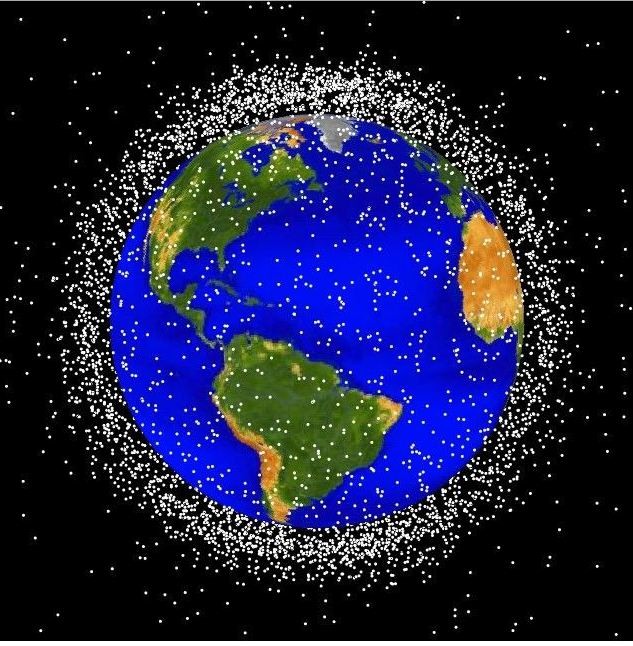Orbiting in outer space above the Earth are millions of pieces of man-made space debris or space junk and scientists now propose using a powerful "space laser" to blast this dangerous trash to prevent the deadly scenario shown in the hit movie, Gravity.
NASA has tracked more than 500,000 pieces of space junk the size of a marble or larger, all traveling at speeds up to 17,500 mph or fast enough for a small piece of orbital debris to damage a satellite or a spacecraft.
There are also more than 20,000 pieces of debris larger than a softball orbiting the Earth. In addition to these large pieces, there are many millions of pieces of space debris that are so small they can't even be tracked. All in all, NASA estimates the total weight of the space junk in Earth orbit is over 3,000 tons.
The carnage shown in the movie Gravity in which space junk destroyed a space shuttle, two space stations and killed astronauts is an extreme example of the devastation space junk can cause. And the number of orbiting junk grows with each rocket launched into space.
Scientists at Riken, a Japanese government natural science research institution based in Tokyo, have developed a new fiber optic laser they propose should be installed on the International Space Station to destroy the mass of space junk surrounding the Earth.
Riken plans to first install a small fiber optic "Coherent Amplification Network laser" or CAN laser on the ISS to test how well this laser works in destroying space junk. If successful, a full-scale version with a range of some 100 kilometers will be installed on the ISS.
Originally designed as a power source for particle accelerators, a CAN laser produces a series of high power pulses very quickly thanks to its bundles of fiber optics that work together to create these multiple laser beams.
The smaller version comes equipped with a 20 centimeter telescope to acquire targets and a 100 strand laser. The larger laser will be three meters long and have a 10,000 strand laser. The more strands, the more powerful the CAN laser.
The CAN laser produces powerful pulses that can be modified to blast space junk. It can target and hit pieces about one centimeter or smaller in size, which are considered the most dangerous types of space debris because they can kill astronauts and severely damage spacecraft.
"The greatest risk to space missions comes from non-trackable debris," said Nicholas Johnson, NASA chief scientist for orbital debris.
Space junk, also called orbital debris, is any man-made object in orbit about the Earth which no longer serves a useful function. Such debris includes nonfunctional spacecraft, abandoned launch vehicle stages, mission-related debris and fragmentation debris.
The U.S. Department of Defense maintains a highly accurate satellite catalog on objects in Earth orbit larger than a softball.



























